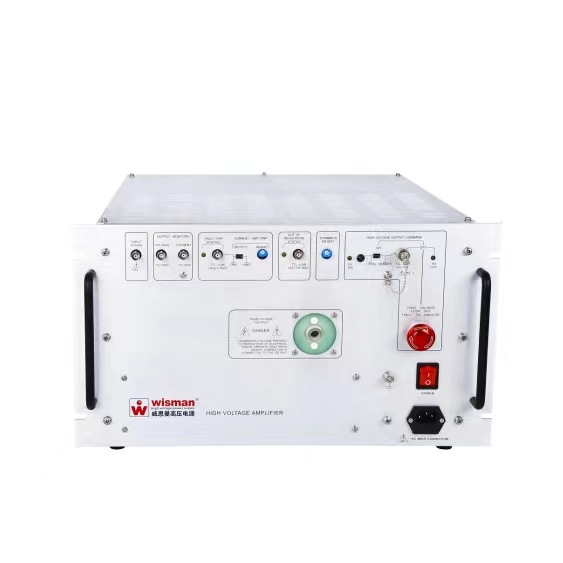
Types and Characteristics of Amplifiers
If you search for "amplifier" on the Internet, you will find results on many websites about audio power amplifiers.
But the "amplifier" itself isn't just for audio. A device that amplifies something is called an amplifier. Of course, in
circuits including audio power amplifiers, various signals are exchanged as electrical signals. Therefore, the
amplifier is to amplify the signal flowing in the circuit, it amplifies the input current or voltage. Its role is to amplify
the electrical signals output by various sensors, making it easy to perform analog-to-digital conversion.
The amplifier is a representative of the analog circuit, it is very important, if you remove the amplifier from the
analog circuit, there is nothing. In addition, since the amplifier can provide any current and voltage (or power), it
can also be used as a power simulator. In fact, the power supply is also a kind of amplifier. A DC power supply is
also called a unipolar (power supply) because it can only provide a positive charge.
We call a two-quadrant bipolar power supply that can provide a positive and negative charge current source, and
a four-quadrant bipolar power supply that can also provide a current absorber. We will cover the four-quadrant
bipolar power supply in detail in the final chapter.
There are two main types of amplifiers, called "linear amplifiers" and "digital amplifiers".
A "linear amplifier" has a frequency domain in which the output signal is linearly amplified with respect to the input
signal and a domain in which it is nonlinear due to the characteristics of the amplifying elements (such as
transistors and FETs) that make up the circuit. In particular, the output signal becomes nonlinear in the region
near zero, and the ON/OFF operation of the input signal of the component causes distortion of the output
waveform. Therefore, it becomes important in which region the input signal is used, which is divided into three
categories, Class A, Class B and Class AB (including class AB1 and Class AB2).
Class A amplifier
The amplifier uses only the linear amplification region of the component. Therefore, although the linearity is high,
the bias current (or voltage) needs to be provided even when the input signal is close to zero, and the disadvantage
is that the efficiency is reduced and the heat is large. To ensure that the output signal is correct, a constant bias
current is always maintained even when the input signal is zero.
Class B amplifier
The amplifier uses the nonlinear and linear amplification regions of the component as is. Therefore, when the input
signal is close to zero, the output signal is also zero, resulting in distortion. Instead, bias currents like those of Class
A amplifiers are not required, and efficiency is improved.
Class AB amplifier
It is an amplifier with A high reputation between Class A and Class B. Distortion is eliminated by adding a bias
current to the Class B amplifier.
Another type of amplifier is the "digital amplifier", also known as the switching amplifier, Class D amplifier. By using
switching technologies such as PWM, this is more efficient and smaller than linear amplifiers. It is primarily used
in compact audio power amplifiers, such as automotive applications. Although MOSFET and IGBT are used as
switching devices, there is also a problem that the frequency band of the corresponding input signal is narrow.
The necessary condition for the stable operation of the amplifier
So far, we have explained the types and characteristics of amplifiers. From here, we'll cover what to look for when
designing and implementing amplifiers.
Frequency band
In order for current and voltage output values to be stable, it is necessary to understand the factors that inhibit
them. The first factor is frequency band. The frequency band corresponds to the operating speed of the amplifier.
At high frequencies, the amplifier cannot keep up with the input signal and the signal amplitude decreases. This
graph shows the frequency before the amplitude reaches -3 dB in the frequency band.
For example, when an amplifier rated at 120 V has a frequency band of 20 kHz, even if it tries to output a ± 20 V
sine wave at 20 kHz, the output amplitude becomes 70% at -3 dB, so it becomes a ±14 V sine wave. Therefore,
it is necessary to choose an amplifier with a frequency band that has a margin appropriate to the frequency you
want to use. The rise time and fall time are related to the frequency band. General response speed (= band) The
rise time of an fc(Hz) amplifier can be obtained by tr?0.35/fc.
Flutter rate
The second factor is the piezoswing rate, which represents the response speed of the amplifier. This shows the
maximum voltage rise rate of the amplifier. It is generally expressed as the voltage change per microsecond. The
response speed of the amplifier may be limited by the frequency band or by the voltage swing rate. When the step
response is limited by the pressure swing rate, the rising waveform becomes a straight line as shown in the figure.
Inductive load
So far, this is due to speed, but now we'll cover things related to load. The first factor is inductive load.
In the case of inductive loads, the volt-current relationship is V = L × di/dt relative to the inductance value L, and
the voltage generated when trying to run at high speed under constant current (CC) control creates problems.
For example, when trying to output a square wave that rises faster, the desired waveform may not be obtained
because the voltage is limited by overvoltage protection. In this case, it is necessary to slow down the rise rate of
the input signal and select a model that supports the generated voltage.
In addition, the use of a step signal such as a digital control on the input signal also generates many voltage pulses.
Since these pulses can be problematic, it is recommended to use a continuous waveform input signal whenever
possible.
On the other hand, overvoltage protection also limits the output signal. However, if the output signal is suddenly
turned off, the protection does not work, and the inductive load may produce a large voltage.
Capacity load
The second factor is capacity load. For a capacitive load, the voltage-current relationship for capacitor C is
I = C × dV/dt. In contrast to inductive loads, high currents are required when attempting high-speed operation
under constant voltage (CV) control. When dealing with large capacities, understand the load characteristics and
output characteristics of the power supply before use.
Diode load
The third factor is diode load. Under constant current (CC) control, even if the current is controlled to zero under
no-load conditions, the output voltage will rise to a positive or negative overvoltage protection level under the
influence of a slight offset. This means that even if the current control is zero, a diode or other load that only allows
forward current can output a voltage signal that is too large in the reverse direction. If this exceeds the withstand
voltage of the load, it may lead to failure, so measures such as reverse-inserting a protective diode are needed.
Capacitance and inductance of cable
The final factor is the cable. When running the amplifier at high speed, we cannot ignore the effect of the cable on
the capacitance and inductance of the output signal. In a high-voltage amplifier, there is a capacitor in the cable
between the output line and the shield, so the capacitor affects the rise rate of the voltage waveform. The longer
the cable, the greater the capacity. This is why low-resistance cables are used among music lovers and systems are
built to minimize cable length.
In addition, in the low voltage and high current model, the inductance of the cable and the inductance generated
by the wiring mode have a great influence on the rising speed of the current waveform. This can be mitigated to
some extent by making the current loop smaller, such as twisting the wiring.
Four-quadrant bipolar power supply
Finally, a four-quadrant bipolar power supply is introduced, which is a high-performance amplifier and an evolution
of the amplifier. An amplifier basically has an output current absorber. Therefore, even capacity loads, inductive
loads and their combination loads can be operated at constant pressure. And, because the response speed is fast,
it can be said to be the ideal power supply. A normal power supply can only output current in one direction.
However, a four-quadrant bipolar power supply can output voltage in both positive and negative directions.
In addition, it also has the function of filling current and pulling current. When an alternating current is applied to
an inductive load or a capacity load, the same voltage may have positive and negative currents. A four-quadrant
bipolar power supply is required to drive such a load.
Under constant voltage (CV) control, the output voltage of a four-quadrant bipolar power supply corresponds to
the input signal. In this case, the output current can be freely valued within the rated range. Again, under constant
current (CC) control, it outputs current according to the input signal. At this point, if the output voltage is within
the rated value, it can be positive or negative free.
However, since the output protection is carried out through overvoltage protection and overcurrent protection, the
desired waveform may not be obtained. It is best to operate within the rated range of voltage and current, and
understanding the load characteristics is important for stable use of the power supply.














